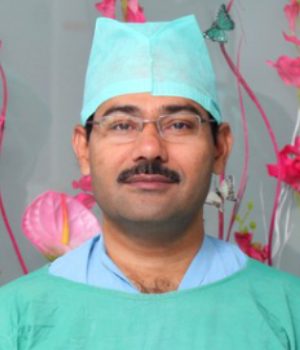What is Laparoscopy?
The laparoscopy procedure, also referred to as Minimally Invasive Surgery (MIS) or laparoscopy, is a surgical technique in which a thin, camera-equipped surgical device is inserted into the abdomen or pelvis through one or more small incisions. The camera displays real-time video of the internal organs on the monitor for surgical guidance, and the laparoscopy operations are done through small incisions.
Laparoscopy for Infertility
Laparoscopy for infertility is a revolutionary procedure that has brought hope to individuals struggling with fertility issues. It allows doctors to explore and diagnose problems within the reproductive system. During a laparoscopy procedure, small incisions are made in the abdomen through which a thin tube equipped with a camera and light source is inserted. This enables surgeons to visualize the internal organs including the uterus, fallopian tubes, ovaries, and surrounding structures with great precision.
Laparoscopic operations have emerged as an invaluable tool for identifying various causes of infertility such as endometriosis, ovarian cysts or tumors, uterine fibroids or polyps, blocked fallopian tubes or adhesions. Once identified, many of these conditions can be treated simultaneously during the same operation using specialized instruments inserted through additional tiny incisions.
The advantages of laparoscopy surgery lies not only in its accuracy but also in its ability to minimize scarring and promote faster recovery times compared to traditional open surgeries. With laparoscopy becoming increasingly popular in treating infertility cases worldwide due to its effectiveness and safety profile, more couples are being given renewed hope on their journey towards parenthood.
Laparoscopy operations and preparations
A complete examination of a woman’s internal pelvic and abdominal structures can be beneficial to get information on the causes of infertility and other commom gynecologic disorders. Laparoscopy procedure requires some preparations.
If you take regular medicines (including complementary ones), make sure you tell the doctor or surgical team prior to the procedure. They will advise if you need to stop any of your medicines before surgery. If you take blood-thinning medicines such as aspirin or warfarin, this is especially important.
A laparoscopy procedure is carried out under general anesthesia. You will be given instructions on how to prepare for your procedure. These will include how long you have to fast (have nothing to eat or drink) before the procedure.
What happens during a laparoscopic procedure?
Laparoscopy is a type of keyhole surgery used to inspect and operate organs inside the abdominal and pelvic area. Laparoscopy can also be used for diagnostic purposes, for viewing the organs or taking a tissue sample.
Trochar is a tubular instrument that is inserted with a special camera during the laparoscopy procedure. The body part is inflated with carbon dioxide gas to provide a working and viewing space for the surgeon. After inflating the cavity laparoscope is inserted. The laparoscope will project real-time images of the operative site on the monitor. On the basis of the type of surgery incisions will be made.
In some surgeries, the surgical drain is inserted to draw excess fluid out. In some conditions, even a tube will be kept inside the body for some time after the surgery to drain the fluids. The incisions will be sewn up after the procedure after the completion of surgery.
What happens after the laparoscopy procedure?
When you wake up after the procedure, you may feel some pain around the cuts. Another bothering pain is felt in the shoulder due to the remaining carbon dioxide.
You may feel sleepy and even nauseous, but these should be for a short time. Stay in the hospital will depend on the type of laparoscopy and post-operative condition of the patient. After a few hours in recovery, you are likely to be sent home with care instructions, including any pain, dressings, and stitches you may have. You may be given pain-relieving medicines.
Laparoscopy Recovery Time
Every surgery whether simple or complicated, needs time to heal. So is with the laparoscopic procedure too. Mainly recovery after laparoscopy depends on its type. Even though it is a minimally invasive technique, your organs, and wound need time to heal. It can take several days to walk around after surgery.
You will need to have a follow-up with your surgeon. Your doctor will remove your sutures and drain if placed and even an imaging test can be done to monitor the healing.
Purpose of Laparoscopy
There are many reasons why a person may need a laparoscopy, like:
- To rule out the reasons causing problems in getting pregnant.
- To diagnose symptoms involving your reproductive organs, including Pelvic Inflammatory Disease (PID), endometriosis, ectopic pregnancy removal, uterine fibroids, and ovarian cysts.
- For removal of adhesions, the removal of ectopic pregnancies, the removal of the uterus (hysterectomy) for any reason, and the removal of cancers of the uterus.
Advantages of Laparoscopy
Overall benefits of laparoscopy outweigh its disadvantages. Even the complications post-surgery is easy to resolve.
- The risk of bleeding during surgery is reduced because the incision size is much smaller.
- The smaller incision size also reduces the risk of pain and bleeding after surgery.
- Exposure of the internal organs to external contaminants is significantly reduced in laparoscopic surgery compared with open surgery
- The laparoscopy recovery time and hospital stay is significantly shorter since healing is much faster.
Take Away!
Laparoscopic surgery is a common technique used to minimize the size of surgical incisions and shorter recovery periods. At Endoworld Hospital, our team of doctors is hands-on with laparoscopic surgery. We believe in delivering the best services with advanced techniques. For further inquiries, contact us.





